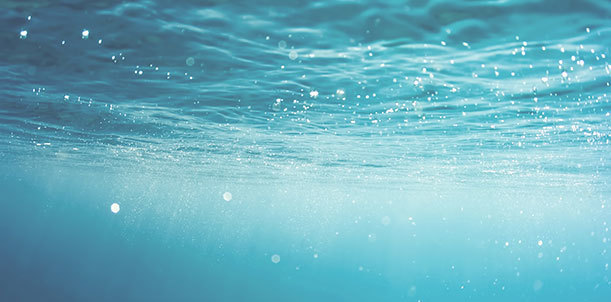BOOMbox at Home: Properties of Water
April 8, 2021

During spring, we're exploring the four elements of earth, air, fire, and water. This week, we’re investigating some of the fascinating properties of water.
Surface Tension
Wouldn’t it be amazing to walk on water? Believe it or not, it doesn’t take a miracle to make it happen. There are 1,200 different creatures that can. Some especially small animals can take advantage of water’s surface tension to move on it like we would move on a trampoline. Surface tension is a property of water caused by molecules of water clinging to each other. Surface tension can make liquid water behave as if there is a thin skin on top of it.
Humans are too big to use this feature to walk on water, but we can use it for some other fun tricks, like making pepper “run away” from your finger. Watch science tricks with surface tension you can try yourself.
Reactions
Have you ever used a bath bomb to take a luxurious bath after a long day? Perhaps you’ve also used baking soda and vinegar or Mentos and Coke to make a model volcano. At first glance, a soothing soak and an exciting eruption probably seem like opposites, but it turns out that these two experiences come from the same science. The fizz created by dropping a bath bomb into your tub and the fizz of a model volcano are both examples of carbon dioxide being generated from an acid-base reaction. "But wait,” you may be thinking, “isn’t water neutral?” You’re right!
On its own, water is neutral, and if you just dropped baking soda directly into the water, you wouldn’t see the same reaction. The bath bomb is actually a reaction waiting to happen; both the acid and the base are already inside, along with the scents, colors, and sometimes, glitter. Here, the water is a sort of helper. When the bath bomb begins to dissolve in the water, the acid-base reaction begins. You can actually control the reaction by changing how quickly the bath bomb dissolves. Learn more about bath bomb science, including how to build your perfect bath bomb.
Heat Transfer
Have you ever wondered why people put salt on the roads and sidewalks in the winter? Find out how salt can help with freezing and melting by making a delicious slurpee drink. You’ll need to check in on this project pretty frequently, so you may want to do it along with another experiment.
Stratification
Candy can, in moderation, be a tasty treat, but it can also be part of your laboratory and your art studio. With just a plate, some water, and some Skittles (or another hard candy), you can see two scientific principles at work while creating some fast, fun art. Learn how to make candy art and science (PDF).
Artist of the Week
Nele Azevedo is a Brazilian sculptor who uses ice as a medium. She embraces the temporary nature of ice sculptures, which are destined to melt once on public display, to create a commentary on important global issues like climate change and war. In addition to public displays, her work is documented through photos, videos, and audio recordings of the ice melting. Her work has been exhibited in eight countries, and she has won several significant awards.
Written by Eli.